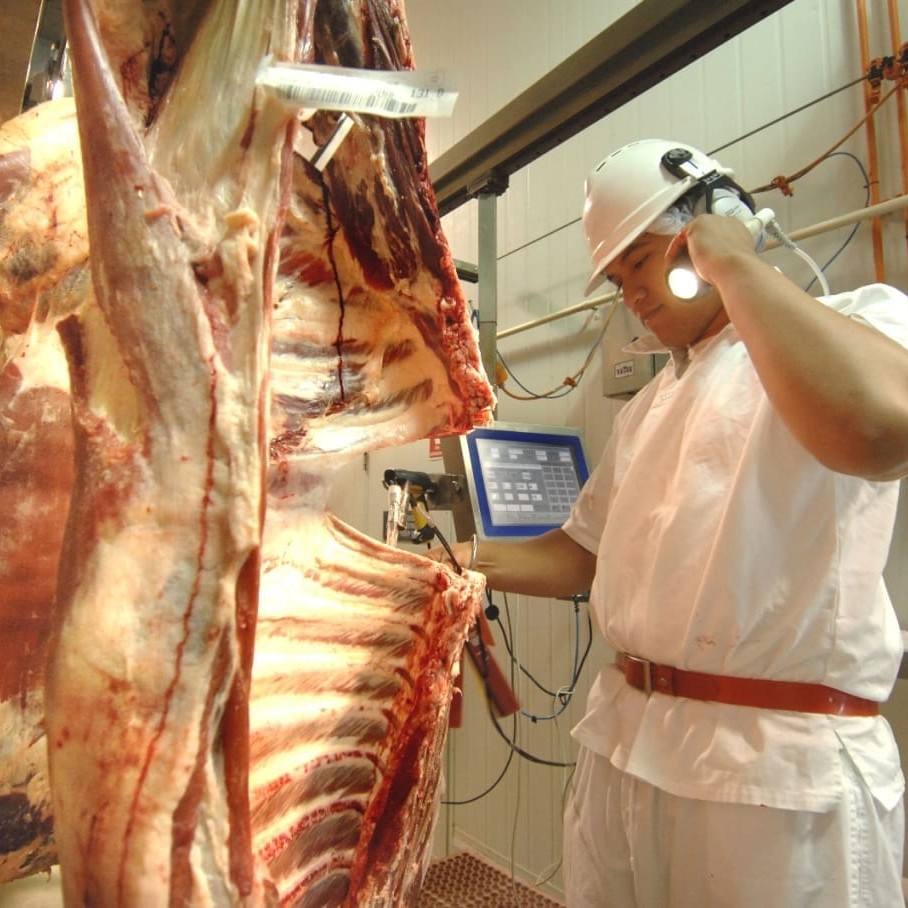 Widespread and in places heavy rain across a large expanse of southern and eastern Australia was expressed in a reduced beef kill for the seven-day cycle ended Friday.
Widespread and in places heavy rain across a large expanse of southern and eastern Australia was expressed in a reduced beef kill for the seven-day cycle ended Friday.
A handbrake was applied on cattle movements and saleyards activity from southern Victoria all the way into Queensland.
The unseasonally wet start to winter reduced numbers at Queensland selling centres reported by NLRS by a further 30 percent following the 55pc reduction in supply the week before. Rain has disrupted supply for two consecutive weeks, with the latest event cancelling last week’s Roma store sale plus Longreach and several other selling centres in central and western areas of the state.
In NSW, NLRS reported sale yardings across the state as being down 29pc, with centres like Gunnedah back 71pc, Dubbo 63pc and Scone 53pc, drawing only 881 head.
Despite quite severe flooding in parts of the Gippsland, Victorian numbers were generally less affected. Supply at Leongatha and Bairnsdale contracted 11pc and 61pc respectively, with the significantly lower yarding at Bairnsdale as result of flooding across the supply region. Colac recorded a 28pc decline in supply while Warrnambool was back by a further 11pc.
Against this trend, Pakenham, Wodonga Ballarat, Camperdown and Shepparton all recorded increases.
The quality offered across many southern selling centres is now mixed at best, with the majority of young cattle showing the effects of the cooler temperatures. There’s an expectation that rates may lift in coming weeks which is typical for the winter period as supply of suitable cattle falls away.
On the back of a year-high Eastern States kill two weeks ago of above 141,000 head, there has been a gradual decline in the two weeks since, due mostly to weather.
Last week’s Eastern States kill of 134,315 reported by NLRS represented a 3pc decline on a week earlier. All states were down in numbers, with the exception of South Australia.
Queensland’s kill last week reached 71,003 head, 1pc off the previous week’s pace. In addition to weather patterns, the result may reflect some producer resistance to grid prices, which remain largely unchanged over the last fortnight.
In southern States, the NSW kill of 32,486 head was down 8pc on the previous week, due to cattle supply issues, while Victoria was much less affected, declining only 3pc to 19,057 head. Tasmania also suffered a setback, down 6pc to 4600 as numbers of killable cattle become harder to procure. In contrast to other states South Australia recorded a 3 increase in numbers to 7136 head.
The current week’s kill in all Eastern states will be further hampered by Monday’s public holiday, although some plants, like Nippon Mackay and JBS Rockhampton, operated regardless.
‘Unkilled’ cattle must hit the market sometime
Given the relatively modest rates of kill experienced across the Eastern Australian states so far this year, and the wide expectation that there are still good numbers available in the paddock, there is a growing anticipation of a backlog of slaughter cattle that must be presented to market some time over the next three or four months, at relatively heavy weights.
For example the Eastern States cattle slaughter for May was back 6pc compared with the same month last year. In Queensland, responsible for about half of Australia’s total kill, May cattle throughput was down 9pc year-on-year.
February, March and April also recorded declines of 1-4pc, compared with corresponding year-earlier figures.
While producers faced with a good body of feed in many regions have the flexibility to retain stock, those ‘unkilled’ cattle currently in paddocks must hit the market sometime, and the possibility now exists that that could happen in a less than orderly fashion. A log-jam would not help in sustaining livestock pricing, particularly while demand in Japan and Korea remains subdued.
There were no significant changes evident in grid prices offered by major southeast Queensland processors last week, for the second week running. However the market generally appears to be under a little pressure, both domestically and also among export customers who are looking for some price recognition out of Australia on the back of the softer A$, now finding a level in the US96-98c range.
Common SEQ grid prices quoted yesterday included four-tooth grassfed Jap ox 315-320c, milk tooth 325c, cows 290-295c. MSA steers sat at 335-340c for grassfed at the top of the tree. Heavy steers at Queensland saleyards last week jumped 11¢, to average 327¢/kg carcase weight due to supply issues, while cows increased 12¢, to 270¢/kg. In southern states young cattle prices were largely stronger with trade steers in Victoria averaging 366¢/kg.
- The EYCI closed yesterday at 375.5c, a solid 8.5c rise on a week earlier due to rain, but 5.75c below where it sat this time last year. Heavy steers yesterday averaged 3c lower than a week ago, at 182.7c while medium cows were unchanged at 129.6c.
